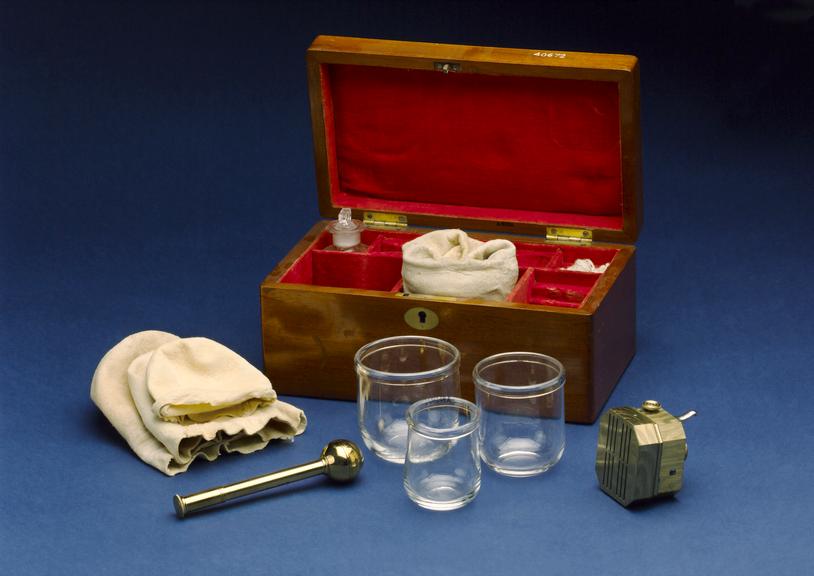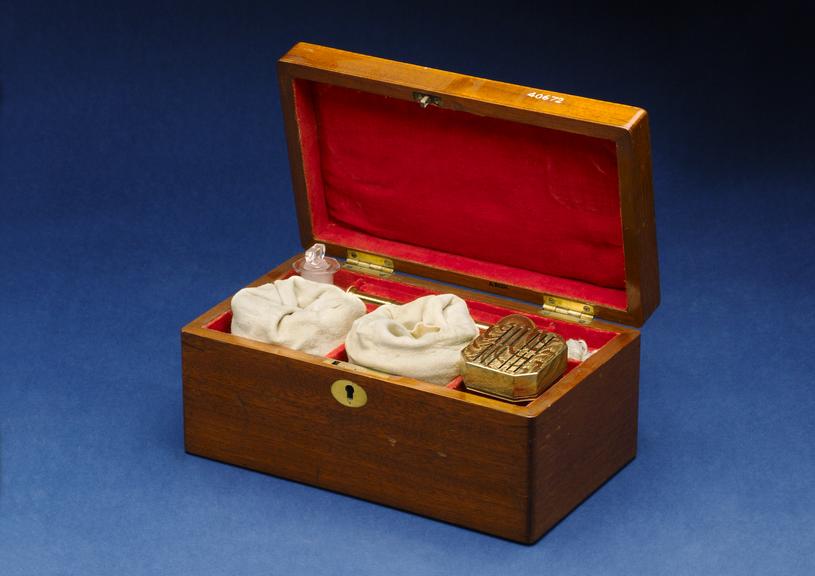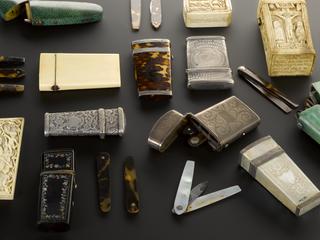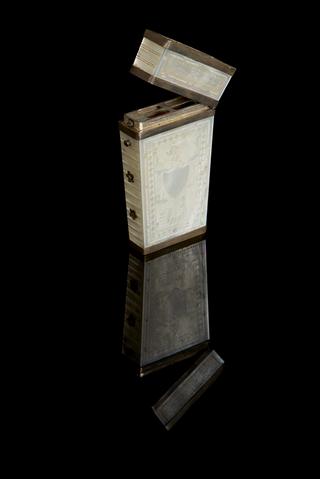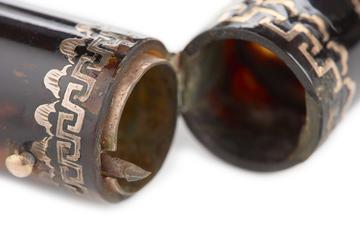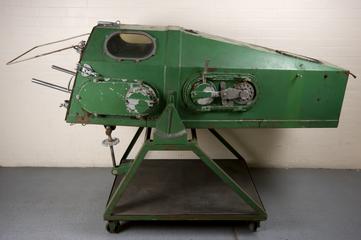Brass scarificator
Brass scarificator with 12 lancets
More
Scarificators had two uses: one was to open veins for bloodletting; and the other was to introduce substances into the body. This brass example has twelve lancets operated by a spring-released trigger. Skill was needed to make sure that the blade did not go too deep into the body. This scarificator was part of a cupping set made by S Maw & Son, a surgical instrument maker based in London. Cupping was a method of bloodletting. Warm glass cups were placed on the skin to draw blood to the surface, which was then released using a scarificator. The scarificator was introduced in the late 1600s.
- Materials:
- brass
- Object Number:
- A86336 Pt1
- type:
- scarificator
- Image ©
- The Board of Trustees of the Science Museum


